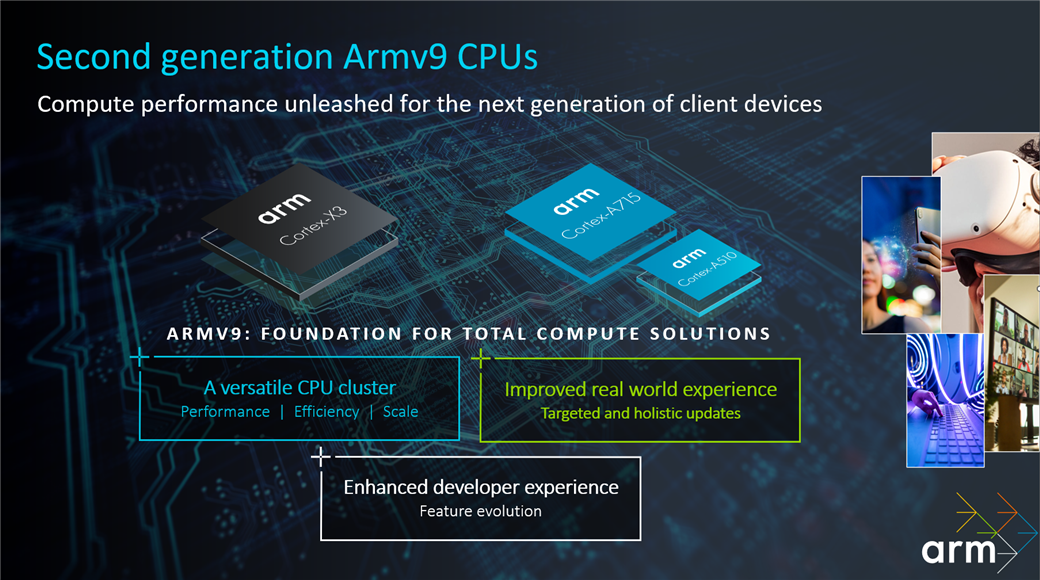
ARM unveiled the second generation of ARMv9 CPUs, which include the Cortex-A715 and an updated version of the Cortex-A510, as well as the new flagship Cortex-X3. The Immortalis-G715 GPU was also shown off. It is the company’s first flagship model and can do ray tracing at the hardware level. Moreover, Arm’s new Total Compute Products are powered by these upgrades. It will be some time before you see any of these benefits in a consumer product because they will all be present in products that debut in 2023.
ARM Cortex-X3 and Cortex-A715
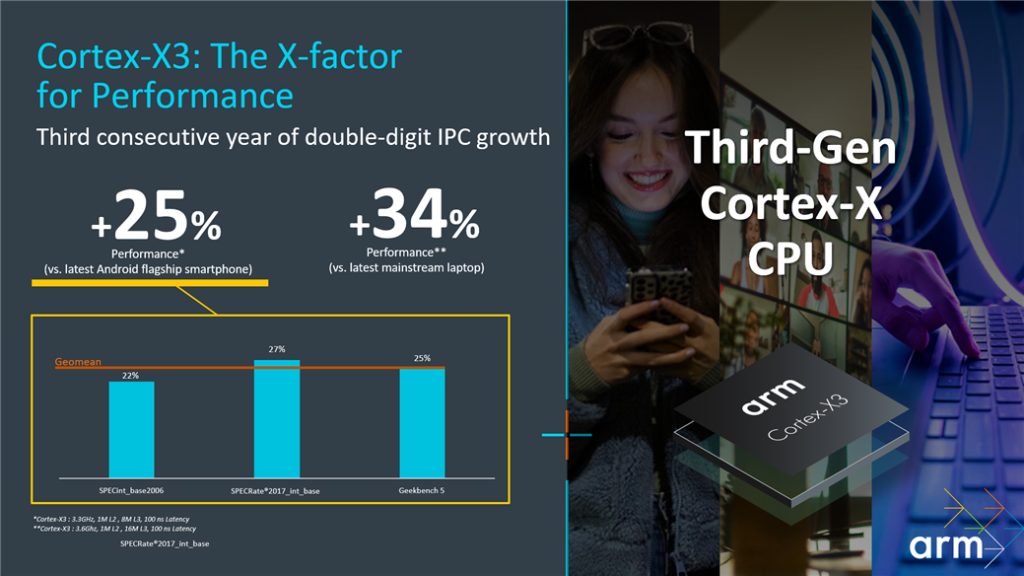
The new Armv9-based CPUs offer significant improvements, as is customary with Arm architectures. The Cortex-X3 is the first in a new line of customizable CPUs, the Cortex-X series, that allows third parties to contribute to the design of the final chip. In the latest Android devices, the Cortex-X3 claims a 25% performance boost over the Cortex-X2. Arm also says that the new chip uses less power while keeping the same high level of performance.

In addition, it offers up to 34% greater single-threaded performance than the most recent Windows laptops. In addition, the DynamIQ Shared Unit (DSU-110) platform may now be scaled to 12 cores and 16MB of L3 cache. This gives Arm processors a wider range of uses, so they can be used in everything from smartphones to high-end laptops.
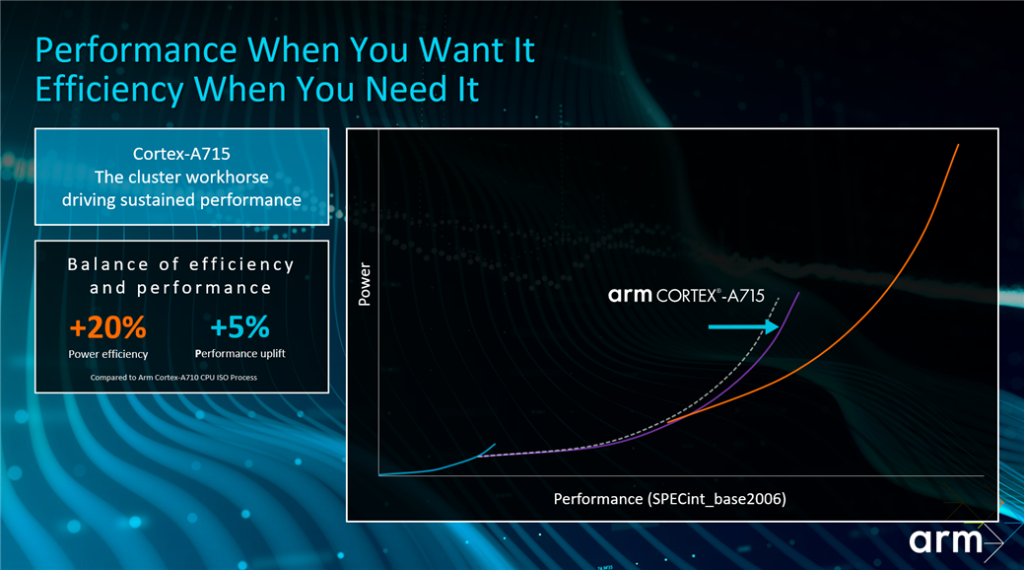
The Arm Cortex-A715 contains a number of enhancements, although its primary focus is on efficiency. The new Cortex-A710 CPU, according to Arm, is up to 20% more energy efficient than the previous Cortex-A710 CPU, which should result in longer battery life for devices that use it. Arm says that the new generation will be 5% faster than the old one and will be able to do the same things as the Cortex-X1 CPU, which came out in 2020.
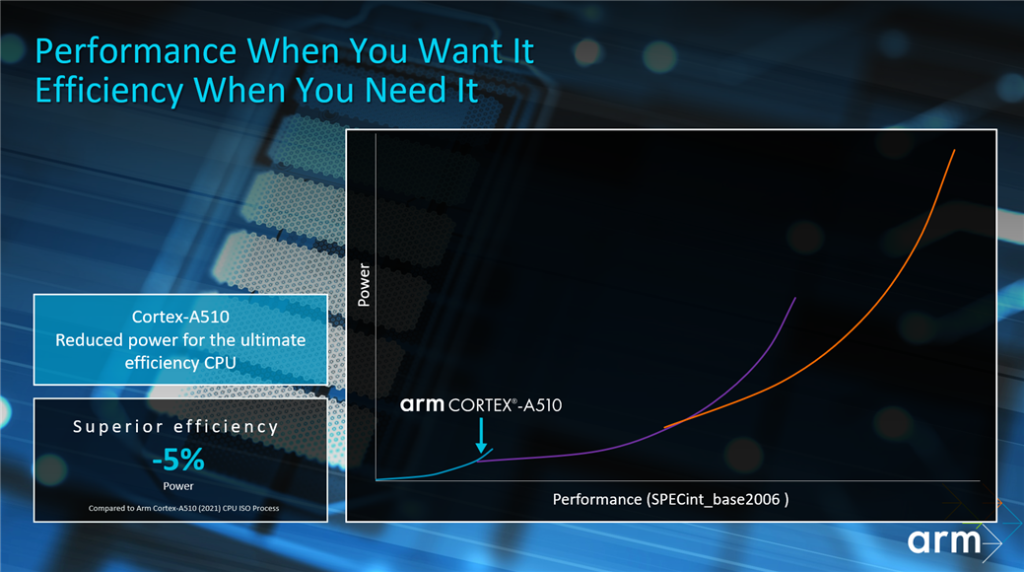
The upgraded Cortex-A510 does not have any performance improvements, but it saves 5% more power than its predecessor, extending battery life even further. In conclusion, this CPU core no longer supports 32-bit, which was part of Arm’s plan to migrate to 64-bit specifically.
ARM Immortalis-G715, Mali-G715, and Mali-G615: Ray tracing on mobile devices
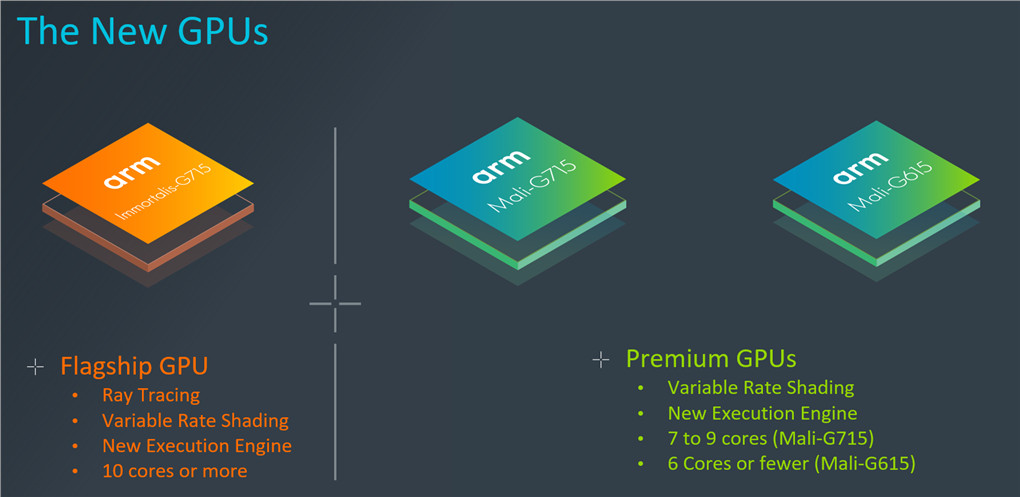
The Immortalis-G715, a brand-new flagship GPU, is available this time on the GPU side. The fact that this is the first Arm GPU to provide hardware-accelerated ray tracing makes it practical to implement on mobile devices. The Mali-G715 and Mali-G615, two new Mali GPUs, were nevertheless released by the company.
Ray tracing, for those of you who don’t know, is a more realistic method of creating lighting and shadows in video games. This is so that the GPU can simulate how light moves in the real world by calculating all the individual light routes in a scene.
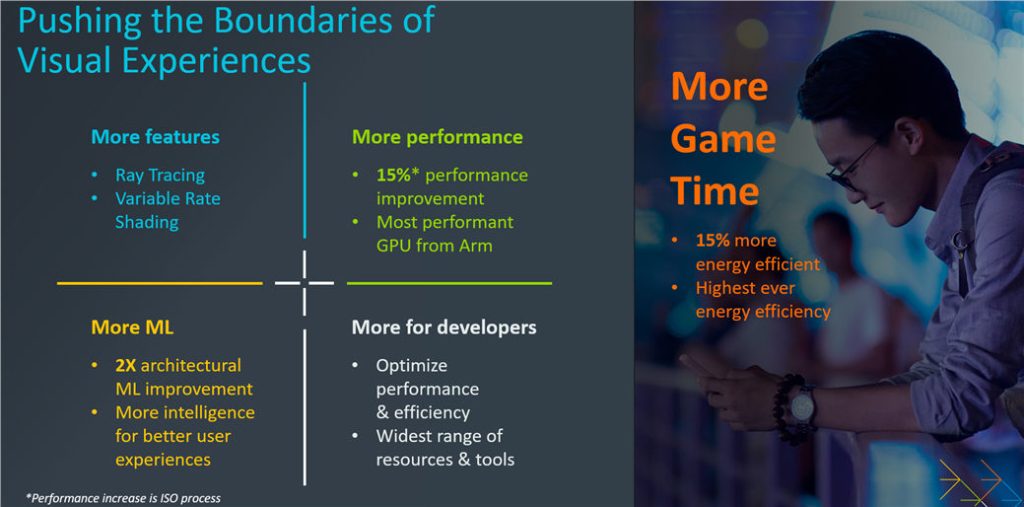
Arm says that ray tracing only uses 4% of the shader core area in the Immortalis-A715, but it is 300% faster than software-based alternatives like the Mali-G710 GPU from last year. While the other GPU enhancements are comparable. Arm promises a 15% architecture improvement over the previous generation. By changing the quality of shaders in different parts of a scene, Variable Rate Shading can improve performance by focusing rendering work on the most important parts. It allows the GPU to generate visuals more finely in action-packed scenes, but less finely on static background objects.
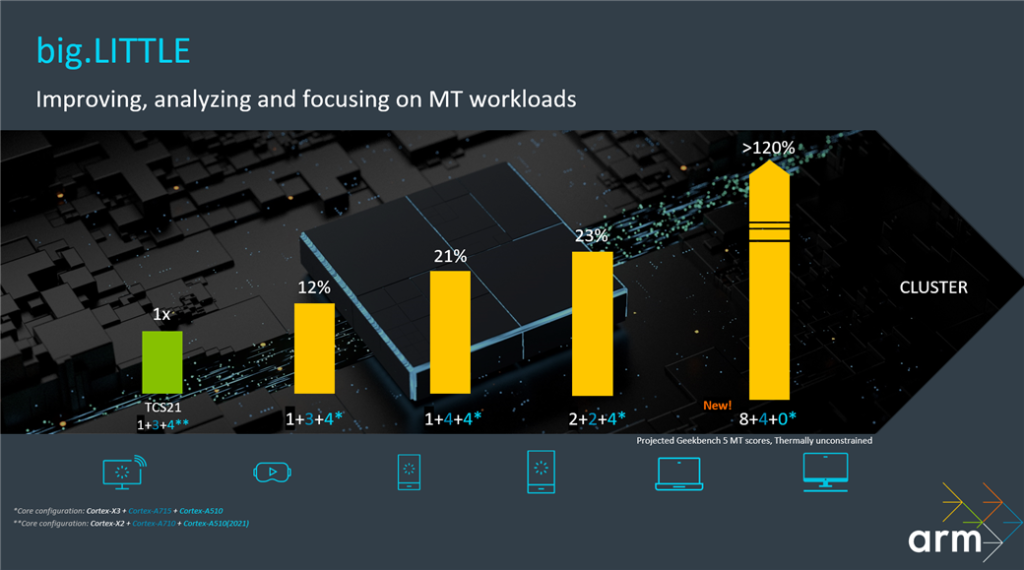
The Arm further touts advancements to the Execution Engine and fused multiply-add (FMA), which double FMA power with a 27% area gain. Matrix Multiply twice ML’s speed. Furthermore, the Command Stream Frontend is faster with triple the peak triangle output. Arm has simplified LOD lookups in the Texture Mapper, which has doubled throughput, and the Mali-Arm G510’s Fixed Rate Compression saves bandwidth. While most functionalities are supported by all three GPUs, the power varies. Immortalis-G715 has 10 or more cores, Mali-G715 7 to 9, and Mali-G615 6 or fewer.
ARM Total Compute Solutions
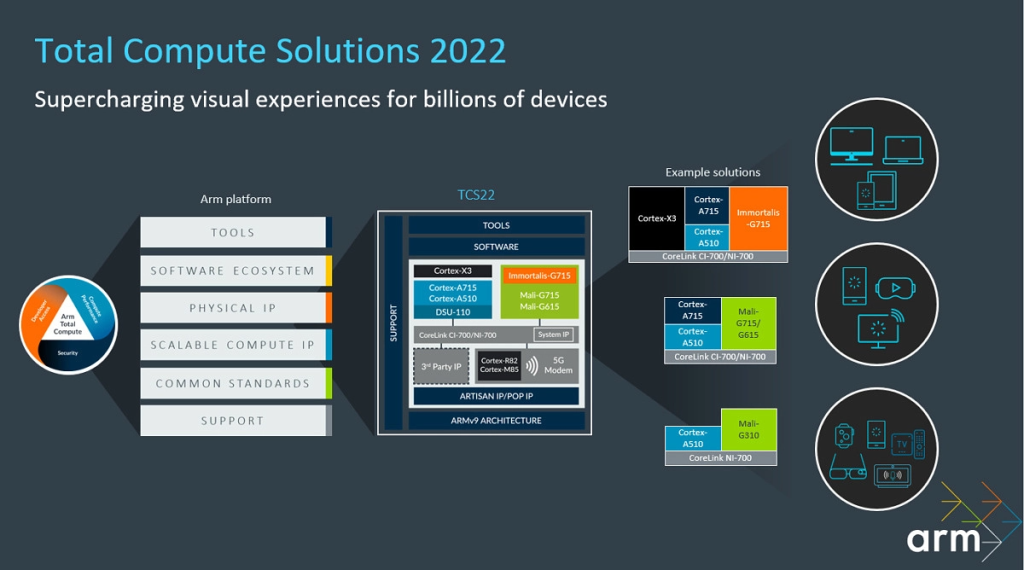
All of these technologies combine to build Arm TCS’s second generation. These unified solutions include all the computer components needed to power a device, and thus are accessible at varying levels for different devices.
Premium solutions may include Cortex-X3 cores, Cortex-A715 and Cortex-A510, and an Immortalis-G715 GPU for flagship smartphones, notebooks, or even desktops. Productivity offerings use Cortex-A715 and Cortex-A510 cores with Mali-G715 and Mali-G615 targeting mid-range devices, Chromebooks, or TVs. For low-end smartphones, wearables, AR eyewear, etc., the efficiency solutions focus on Cortex-A510 and Mali-G310 GPUs.
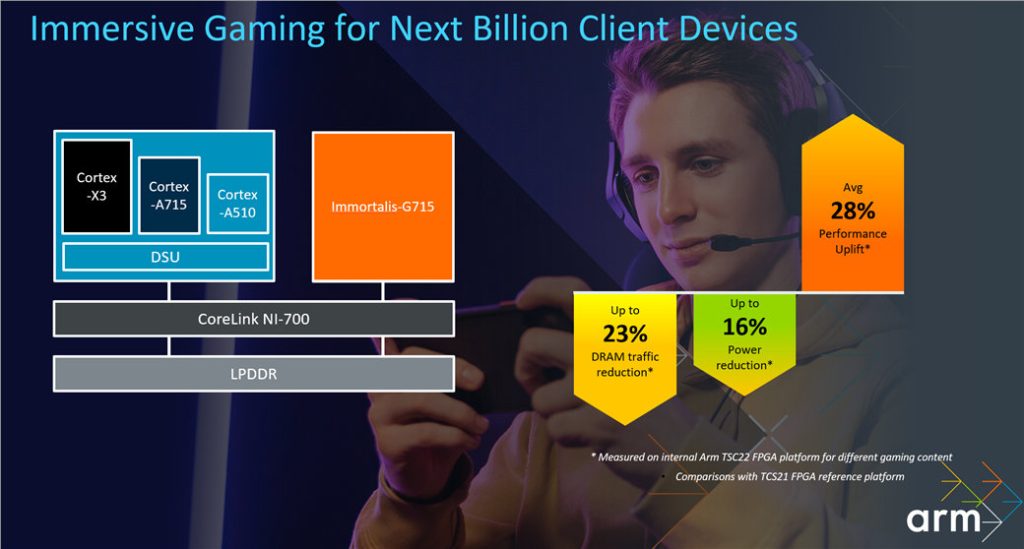
Security enhancements across three layers are also included in the new Arm TCS22 solutions: in-process protection, secure firmware improvement, and trusted execution environment (TEE). Because of the new Armv9 CPUs, in-process security now includes asymmetric Memory Tagging Extension (MTE), as well as increased PAN to defend against JITed code intrusions. Control flow integrity as well as memory integrity protection have also been added to the TEE.
Availability
All of this will be available on devices powered by ARM in 2023, and that year is shaping up to be a huge one. In addition to the usual productivity and system improvements, hardware-based ray tracing for mobile will make its debut that year.
Paul Williamson, Senior Vice President and General Manager, Client Line of Business, Arm, says
Smartphones are at the center of our connected lives. From gaming to productivity, through video calling, social media or virtual environments, it is the device that provides us the connection to everyone and everything, in real time. For developers, making these immersive real-time 3D experiences even more compelling and engaging requires more performance.
Arm sets the standard for performance and efficient compute, and our latest suite of compute solutions for consumer devices will continue to raise the threshold of what’s possible in the mobile market, shaping the visual experiences of tomorrow.
